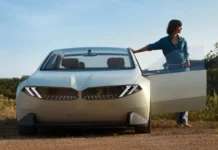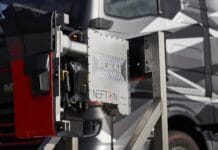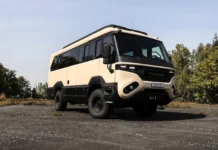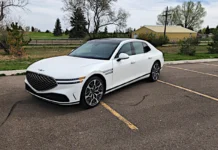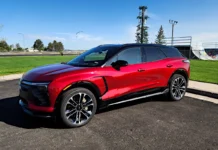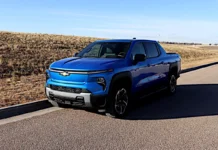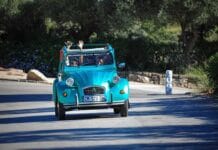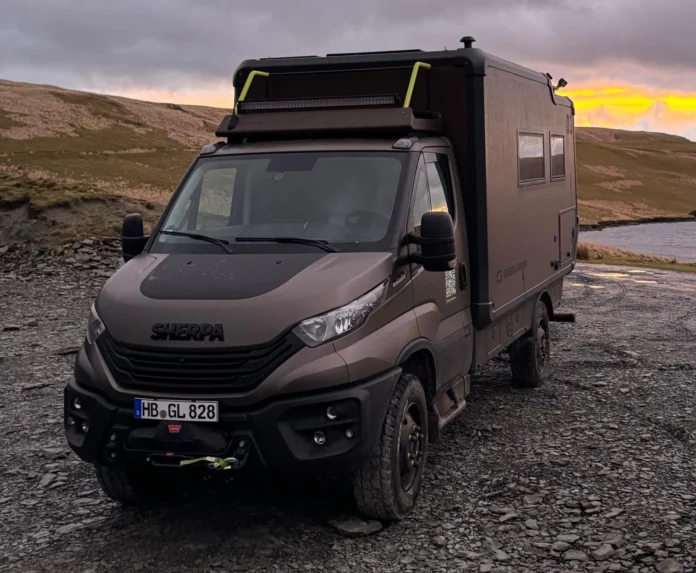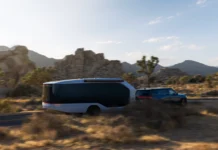The annual Düsseldorf Caravan Salon is approaching quickly, and Dethleffs is gearing up to show one of its most innovative, ground-up rethinks yet. Following in the German brand’s long-running tradition of eco-friendly Düsseldorf show vehicles, the E. Home Eco features a highly sustainable construction atop an all-electric Ford chassis. Gone is the usual array of synthetic materials, replaced with more natural alternatives, such as a flax-composite shell, corn-based furniture, and sheep’s wool upholstery.
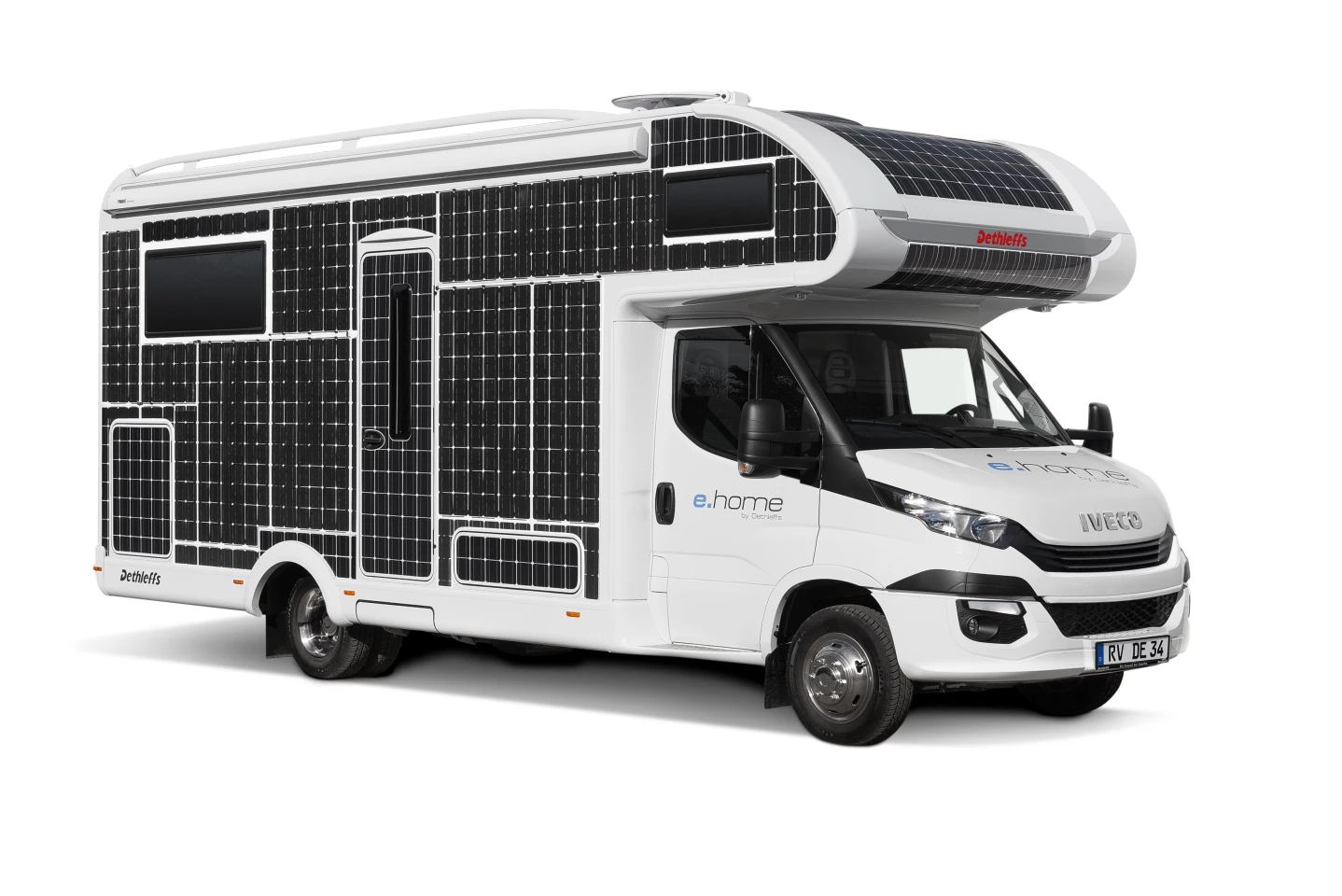
Interestingly, it was Dethleffs’ sister, Erwin Hymer Group brand Bürstner, that showed the first all-electric Ford Transit-based camper van in 2022. Dethleffs appeared to be on hiatus from green concepts and launches for a few years, focusing instead on developing an adventurous lineup of compact, thrill-seeking AWD and toy-hauling motorhomes.
Now Dethleffs is back in the driver’s seat of the envelope-pushing eco-RV game, and it’s previewing what the next generation of environmentally influenced design could look like in RV manufacturing. The company notes that while its previous eco models were centred around electrification of powertrain and onboard RV equipment, its new direction will extend beyond vehicle usage into material selection and supply strategies.
Dethleffs’ technical team has worked hard to maximise the E-Transit’s limited range by optimising aerodynamics. It’s replaced the side mirrors with a rear-view camera system, swapped the rear wheel arches for dropped bodywork and pulled off roof components for smoother airflow, all to help eke out every last mile-per-charge.
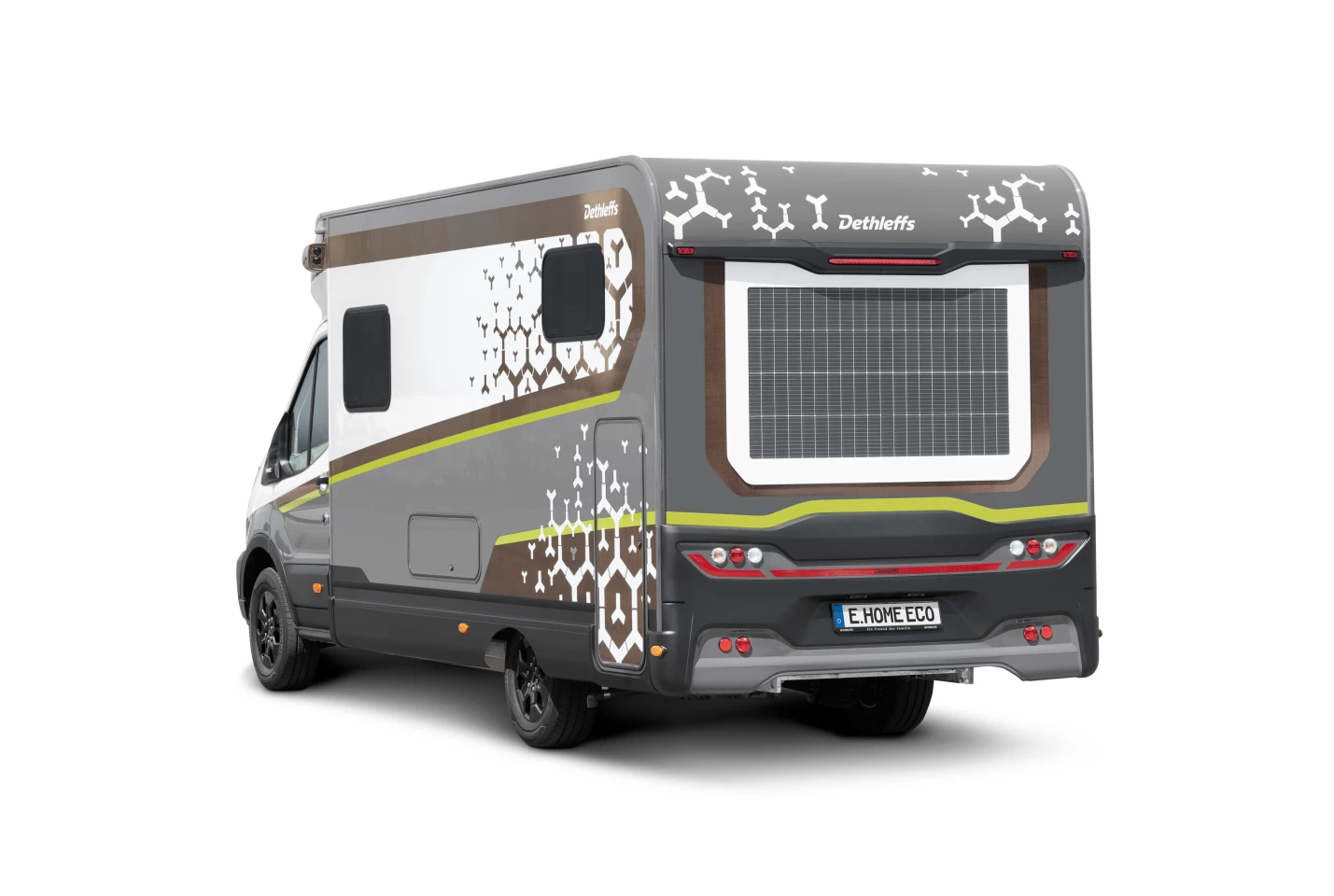
Sustainable materials aren’t quite as flashy and attention-grabbing as electric powertrain technologies, but they’ve begun to find experimental and nascent production use in RVs and the broader mobility industry. For its part, Dethleffs foregoes the common fibreglass motorhome box construction in favour of a flax composite supplied by German specialist Greenboats.
Greenboats developed its flax-based natural fibre composite materials for the boat industry in 2013 and has since expanded into other industries, including sporting goods and RVs, through its spinoff brand, Circular Structures. Last year’s Düsseldorf Caravan Salon welcomed the Greenlander Sherpa, an Iveco Daily 4×4-based overland expedition vehicle with a living module made out of Circular Structures’ flax composite. The first production run has sold out, but Greenlander plans future runs on the Mercedes-Benz Sprinter AWD and Atego.
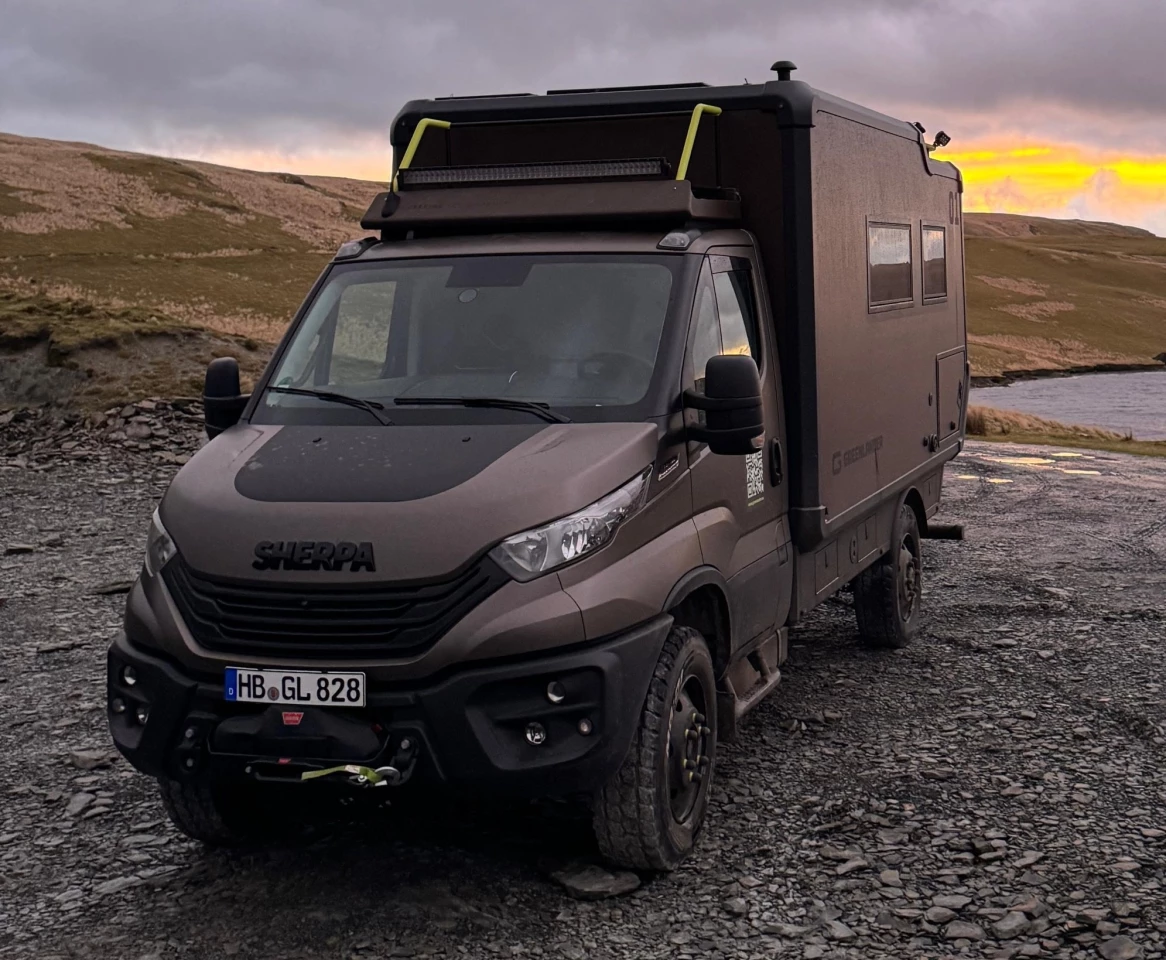
The flax composite in use in the E. Home Eco’s construction doesn’t eliminate plastic because the natural fibres are still set in a resin, just as glass fibres would be in fibreglass. Dethleffs stresses that the resin in this case features 40 per cent natural content, including linseed oil from the same type of plants from which flax is harvested. According to Dethleffs, the flax fibres themselves offer comparable structural properties to glass but with a carbon footprint that’s 80 per cent lower.
To insulate those naturally flaxy walls, Dethleffs uses a foam made from recycled PET bottles, a material we’ve also seen used by other RV manufacturers, including Escapod. Dethleffs says that the material is also recyclable, allowing it to be repurposed at the end of the RV’s lifecycle.
The floor below those furnishings is made from a natural formulation of linoleum that incorporates a mix of jute fabric, linseed oil, cork flour, and natural resins. The upholstery fabric, meanwhile, is a processed sheep’s wool, promising a warm, comfortable feel and durable, stain-resistant, flame-retardant performance.
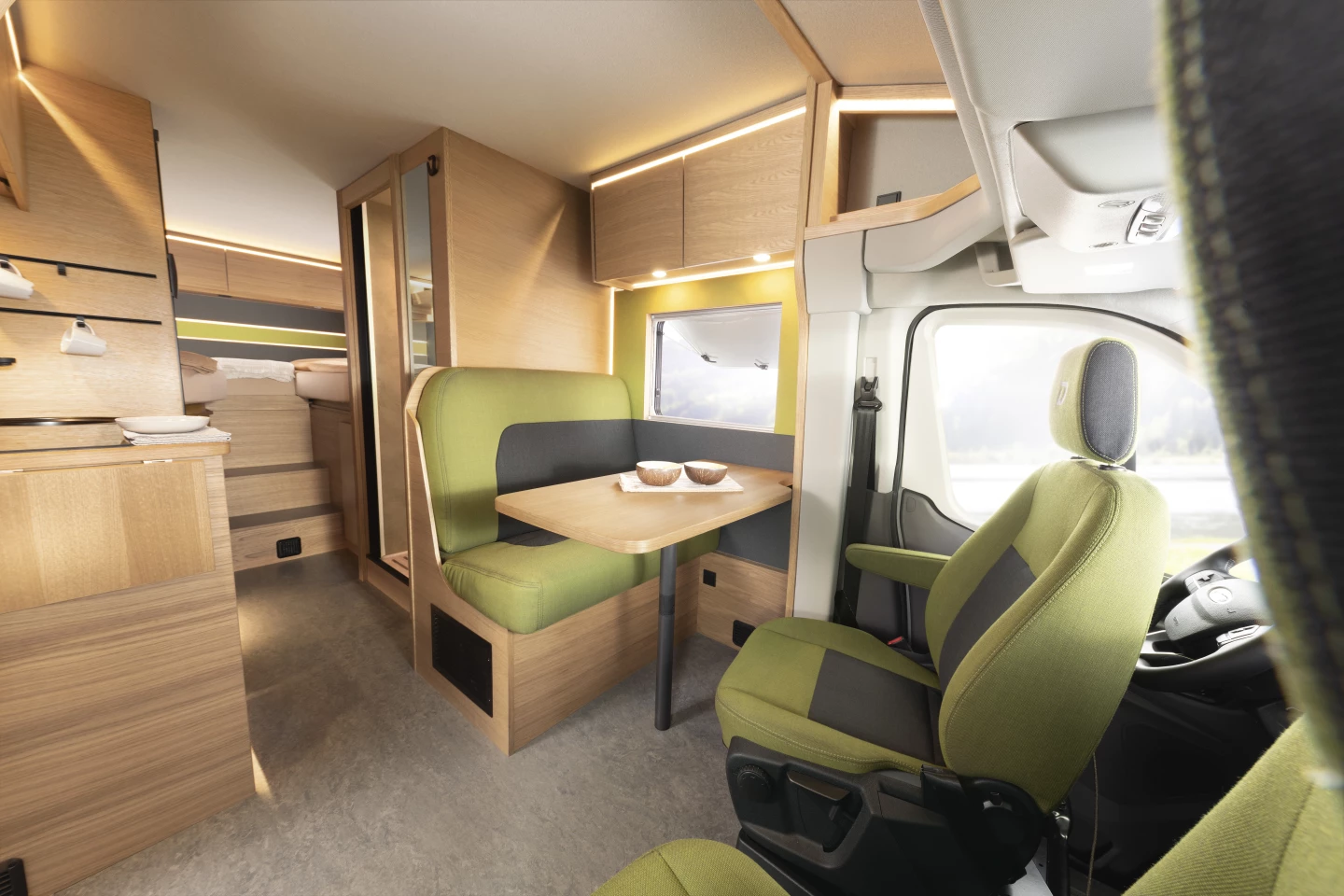
Like the original 2017 E.Home, the E. Home Eco is designed to run entirely on electrical power, a feature far more common in campers today than it was eight years ago. Dethleffs doesn’t aim for an entirely self-sufficient, off-grid electrical system; however, it does tap into shore power to run a heat pump and a separate water heater, both supplied by Truma. The low-noise heat pump distributes heating through floor ducts, assisted by electrical boosters that accelerate heating of the air. Cooling is provided through ceiling ducts.
The E.Home Eco doesn’t include the full-body solar suit of the original E.Home, but Dethleffs has integrated a little more than half the original concept’s capacity, installing 1,700 watts of panels more subtly on the roof and rear wall to power the onboard battery.
“In our development projects, we routinely evaluate new materials based on renewable or recycled raw materials, as well as environmentally friendly innovations from our suppliers, to determine their practicality in caravanning applications,” said Dethleffs Managing Director Bernhard Kibler. “Some of these approaches may find their way into production vehicles in the future, while others still need to prove their practical viability.”
So, perhaps most of the E.Home Eco’s approaches ultimately prove their “practical viability” to the point that Dethleffs sends the whole vehicle through to production lines.
We’ll get a closer look at the E. Home Eco concept, which will be showcased at the 2025 Caravan Salon, set to get underway in August.
Source: Dethleffs
RVs and Motorhomes, Dethleffs, RV,electric-camper, Concept Vehicle, Dusseldorf Caravan Salon 2025, sustainable design, Motorhomes, Motorhome, Camping, Outdoors and Camping

Chris joined the New Atlas team in 2011 and now serves as the automotive and campers editor, traveling extensively to gather the latest news on cars, outdoor sports gear and other innovations designed to help people experience and enjoy the greater world around them.




